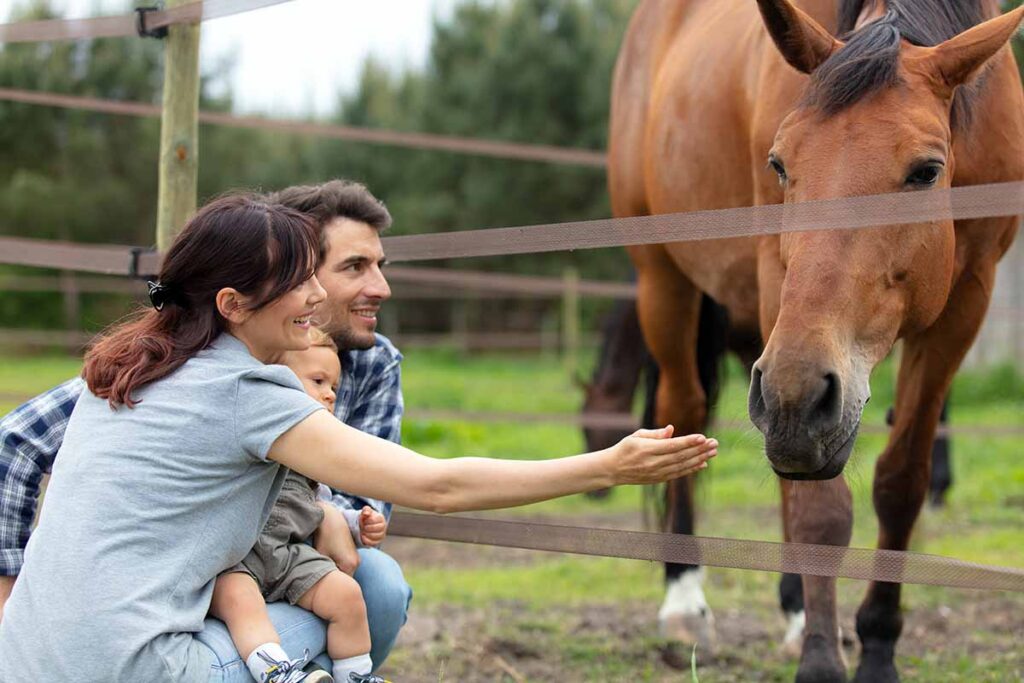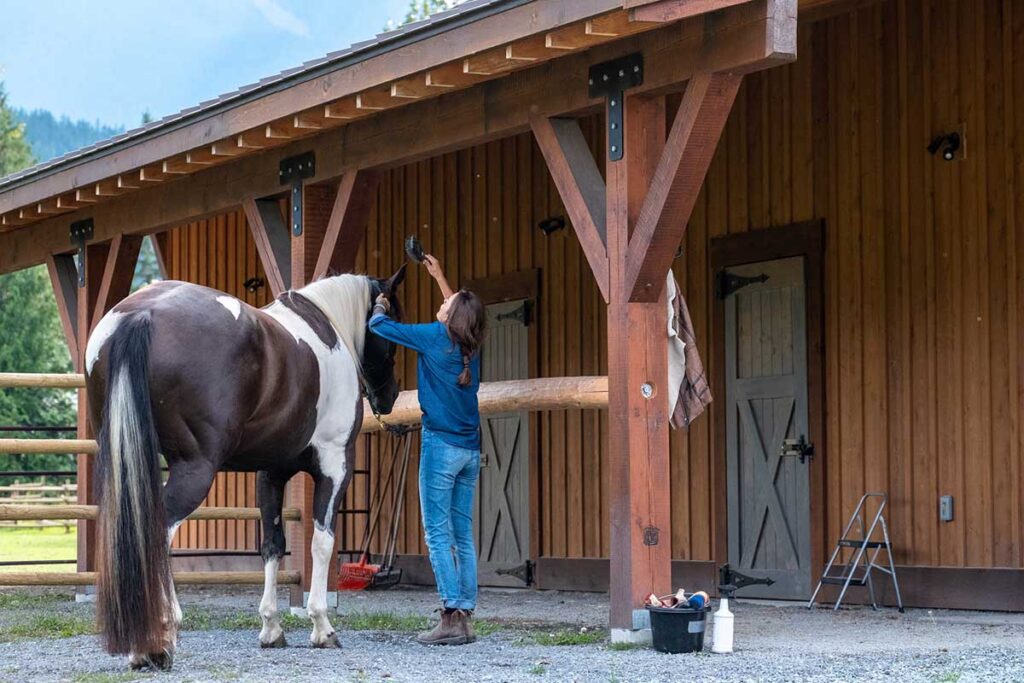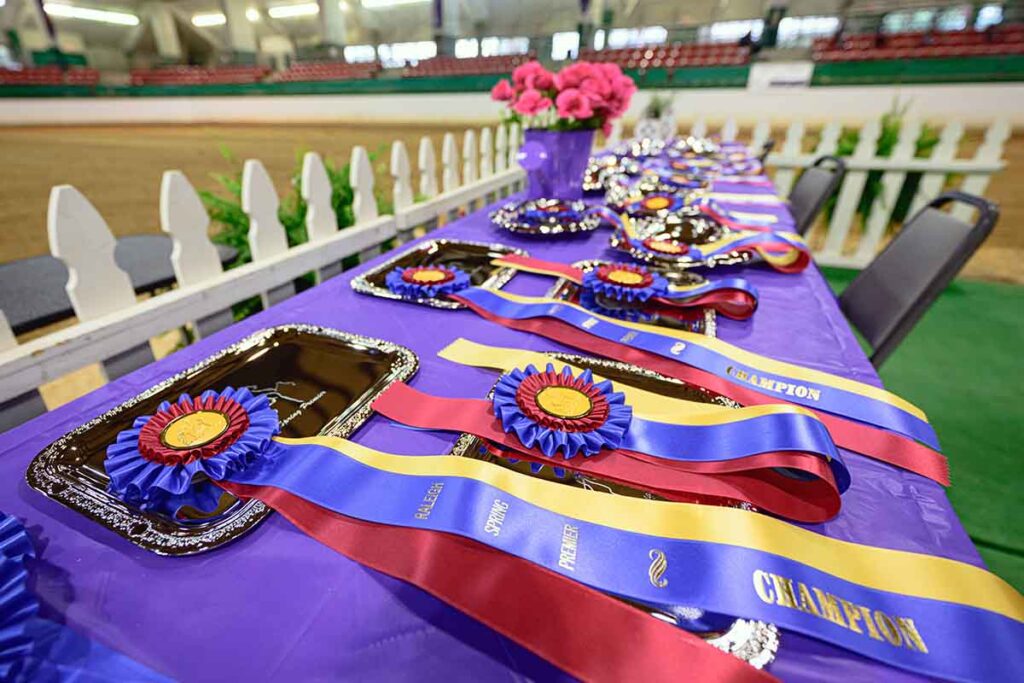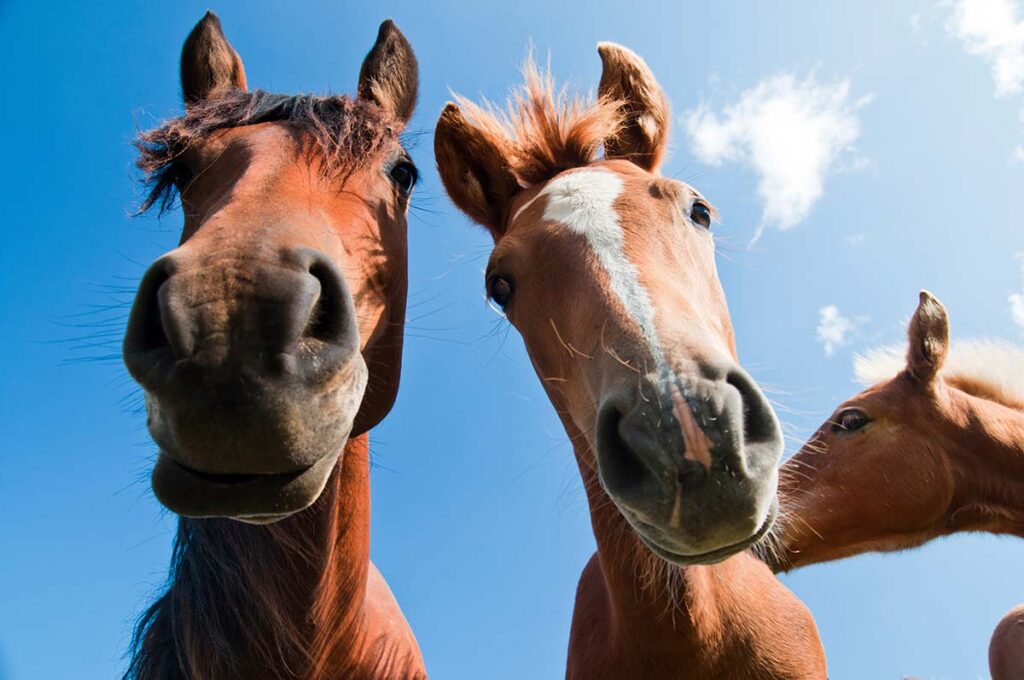One of the first pieces of equipment you’ll likely buy for your horse is a halter. This very basic piece of headgear allows you to handle and control your horse safely. When picking a halter for your horse, it’s essential to choose one suitable for your horse’s size, behavior, and purpose. In this article, we will describe different types of halters for horses, the materials they’re made from, and the pros and cons of each.
Common Horse Halters
Here are four of the most popular horse halter options, which you can find in nearly any tack shop or online retailer:
Nylon Halters: Nylon halters are lightweight, strong, and affordable. They’re perfect for everyday use and are easy to clean. They come in various colors and designs, making it easy to match your horse’s personality. Some nylon halters, however, can cause irritation or rub a horse’s skin—particularly if they don’t fit properly. For this reason, you’ll want to pick a nylon halter with a soft lining to prevent skin issues or hair loss. You’ll also want to remove this halter from your horse when he’s turned out or in his stall, because it won’t break easily if it gets caught on something or in an emergency situation. Most nylon halters cost around $15-40.
Leather Halters: Traditional leather halters look very appealing, and you often see them on show horses. They’re comfortable for the horse, strong, and durable, making them suitable for everyday use or turnout. Leather halters also come with various styling options, such as brass fittings, stitching, and padding for extra comfort. The only downsides of leather halters? They’re more expensive than nylon halters, might need more frequent replacement, and require regular care to prevent the leather from cracking. The price range for a leather halter can be anywhere from $25 to more than $100.
Breakaway Halters: Breakaway halters are nylon with a leather crownpiece that’s designed to break with enough force. They offer the durability of nylon and the safety of leather, allowing horses to free themselves if they get entangled. Most breakaway halters cost around $20-40.
Rope Halters: Rope halters have a minimalist design characterized by knots that apply pressure to certain areas of the horse’s face. They’re ideal for training, groundwork, and natural horsemanship because they provide more control than other halters. They might not provide the same level of comfort as other halters, however, and when used or fitted incorrectly can even cause irritation or injury. Most rope halters cost about $15-50.


How To Put a Traditional Halter on a Horse
Follow these steps to halter your horse using a nylon or leather halter:
- As you approach your horse to halter him, make sure the halter is unbuckled and the lead rope is attached.
- Stand on the left side of the horse, parallel to him and just in front of his shoulder.
- Pass the end of the lead rope under his neck, and pull it over so it’s secure around his neck. This will help prevent him from wandering off while you put the halter on.
- Hold one side of the halter in each hand (without letting go of the lead rope), and position it under your horse’s muzzle with the crownpiece—the part that goes over his ears—in front of his head, not behind it.
- With your hands on either side of the horse’s head, position the noseband so the horse’s nose will slide easily into it and raise the halter into position.
- Guide your horse’s nose through the halter’s noseband and chin strap, and gently slide the crownpiece over his ears. If your crownpiece is only attached on one side of the halter, softly pass it behind his ears and over his neck to secure it.
- Fasten the halter on your horse either via a clip under his jaw or a buckle on the crownpiece.
Tip: Make sure your halter fits properly and is neither too loose nor too tight. The noseband should lie two fingers below the cheekbone, and you should be able to fit two fingers between your horse’s face and the noseband.
How To Put a Rope Halter on a Horse

Because rope halters don’t have any hardware, you’ll need to secure yours using a knot. Here’s how:
- Slide the halter onto your horse’s head the same way you would any other halter, following steps 1-5 above.
- Once you have the halter properly positioned on your horse’s head, pass the end of the rope around and behind your horse’s ears and pass it down through the loophole of the other end of the rope.
- Hold the end of the rope that’s through the loophole in your right hand, and hold the loophole with your left thumb.
- Run the end of the rope that’s in your right hand behind the loop toward your horse’s eye, then punch it through the new loop you’ve just created.
- Tighten and secure the knot by pulling the tail of the rope back toward your horse’s hindquarters.
Take-Home Message
Do some research to determine which halter is best for your horse. Consider budget, material, and what activities you plan to do with your horse before buying. Always opt for a quality halter that delivers comfort, durability, and safety.
Related Content: How To Catch a Horse in a Field
Are you enjoying this content? Sign up for My New Horse’s FREE newsletter to get the latest horse owner info and fun facts delivered straight to your inbox!








